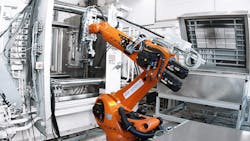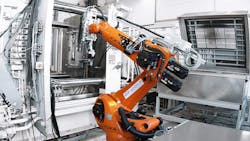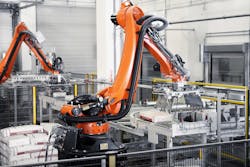How to Assess the Value of Robot Investments
A recent survey about robotics use among Automation World readers indicates that just under half of respondents (45%) report that their assembly and manufacturing facilities currently use robots as an integral part of their operations. More specifically, of those facilities using robots, 35% have adopted collaborative robots (cobots), while the remaining 65% use only industrial robots.
As widely adopted as robots have become over the past several years, there remains plenty of potential upside for robot investment. And that’s why it’s a good point in time to assess the value determination of investment in such technology.
“The calculation of total life-cycle cost of a piece of equipment, such as a robot, is an effective approach that takes into account not only the purchase price, but also potential production output and all other costs associated with maintaining that robot to arrive at its actual cost,” said Kevin Gavin of KUKA Robotics Corporation.
As part of this total cost of ownership (TCO) assessment, Gavin advises getting input from onsite production managers, maintenance managers, programmers, and any other personnel who will help determine specifics of the robotic application. Getting these varied insights is important in helping determine TCO based on capabilities of the robot.
Gavin and KUKA are highlighting the need for applying TCO to robot purchases, as they see many companies overlooking TCO and, instead, choosing robots based strictly on price.
Cobot or Robot
Much of the division between high and low-cost robots tends to fall along the collaborative/industrial robot line. Gavin advises that, while they’re considered a value in terms of price and ideal for certain applications, it’s important to realize that collaborative robots can only operate at speeds that will prevent injuries in the case of an accident. “For greater speed and throughput, industrial-type robots have fewer restrictions, though the highest-quality industrial-type robots include sensors that will trigger a slowdown when a human approaches the workspace,” he said. With these technologies, “the safety aspect remains, but it’s combined with higher payloads and longer reaches in addition to throughput.”
Read more about the systems that provide industrial robots with collaborative capabilities.
Gavin explained that finding the total cost of ownership for a robot goes beyond the collaborative versus industrial comparisons. “Industrial robots are built tough from heavy-duty castings and gears and, as completely sealed units, these robots are more robust by nature. In some industries, an industrial robot’s working life can span from 10 to 15 or more years—and many can be reprogrammed to support other processes as production needs change and new projects arise.”
The robustness of industrial robots typically means they will require less maintenance over their lifetimes and tend to be better able to recover from an accidental crash, according to Gavin. “This reduces repair costs and production losses by a significant amount, and because extended robot downtime causes total cost of ownership to rise dramatically, it’s an important factor to consider.”
OEM support
As with any capital expenditure on automation technologies, ongoing support is a critical factor when considering the total cost of ownership. “Regardless of its initial purchase price and capabilities, a robot will not provide the highest utilization and lowest possible total cost of ownership if it lacks OEM service and support,” said Gavin. He explained that KUKA addresses this through the company’s my.KUKA digital customer portal. Here, KUKA robot users can view technical data, manage licenses, and access individual support for their particular robot applications.
Gavin added that application support from robotics OEMs is “equally critical because it allows the identification of potential problems at the early stages of a project. It ensures there are no unexpected additional costs and that the installation is done right the first time. Post-installation training from robotics OEMs also contributes to the prevention of mistakes or mishaps that could result in unexpected downtime and loss of production. This is especially important for a company’s first robot installation, as it allows them to significantly shorten the automation learning curve.”
About the Author
David Greenfield, editor in chief
Editor in Chief

Leaders relevant to this article:


